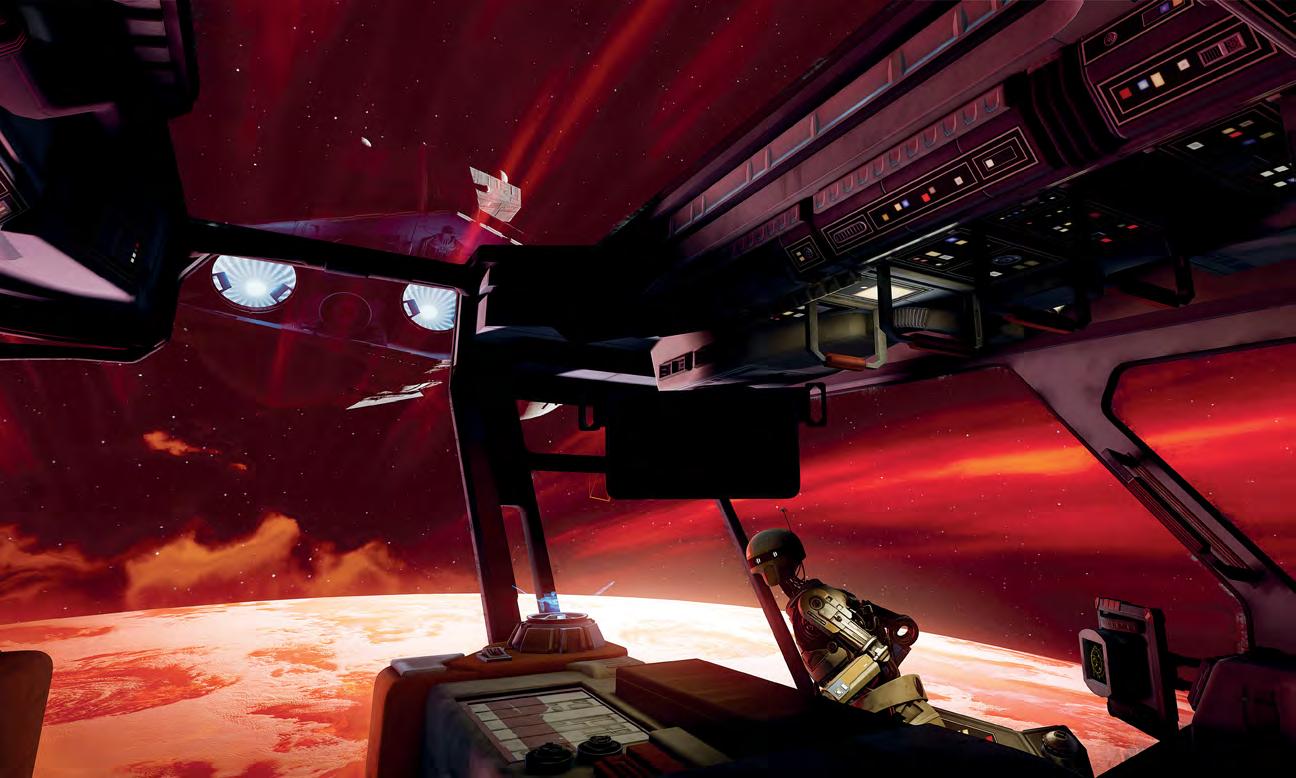TV
WORLD-BUILDING AND MONSTER-HUNTING WITH THE WITCHER By IAN FAILES
All images © copyright 2019 Netflix. TOP: The swamp arachnid creature known as the Kikimora, which Geralt battles right at the top of the series. OPPOSITE TOP TO BOTTOM: A clash between soldiers was filmed with minimal actors and horses. The final shot made use of crowd simulation software to fill the frame. CG geometry for Cintra Castle. The final shot of the city under siege.
68 • VFXVOICE.COM SPRING 2020
Already a popular book and game series, The Witcher has now also made the move to a streaming series on Netflix, created by Lauren Schmidt Hissrich. With a story that centers around monster hunter Geralt of Rivia (Henry Cavill) making his way in a fantastical world, the show was always going to involve some level of visual effects work. That effort was overseen by Visual Effects Supervisor Julian Parry and Visual Effects Producer Gavin Round, with a host of visual effects studios delivering shots for the show. These included Cinesite, Framestore, One of Us, Nviz and Platige Image. “When I read the scripts, I realized I was not looking at a standard TV series,” discusses Parry. “I realized it had a whole worldbuilding sub-story. I did some further research and saw that it was actually a really big book series, and it dawned on me that we were going to have to do this justice.” The show was to be filmed in Hungary, the Canary Islands and Poland. From a visual effects point of view, live-action photography was a jumping off point for environment extensions, battles, creatures, magical effects and a host of weapons, blood and gore. Says Parry, “Cinesite supplied a couple of our creatures and environments. Framestore worked on mainly environments and 2D effects. One of Us had a mixture of 3D creatures and environments. Nviz were supplying predominantly the eye coloration effects. Platige Image, who were closely tied into the show from the game series, also supplied us with 2D and 3D effects.” CREATURE FEATURES
One of the first major VFX sequences audiences encounter in
The Witcher is a fight between Geralt and a swamp-based creature called the Kikimora. The scene plays out almost like hand-to-hand combat. “Our aquatic arachnid here lived in a bog swamp, so I knew we had to deal with water interaction and other occlusions,” outlines Parry. “We started out with previs to get an idea of what action was required, and from that we worked backwards to work with Production Designer Andrew Laws and Stunt Coordinator Franklin Henson to plan things out. “Alex Pejic, the Visual Effects Supervisor from Cinesite, came out to the shoot,” continues Parry. “We chose to have a couple of prosthetic pieces made. We felt we would benefit from the interaction. The eyelines and scale of the creature was all previs’d so Henry could see what this thing looked like and what space it would take up in the environment. Then it went to Cinesite for post.” “The shots that challenged us the most,” details Pejic, “were mainly to do with the movements of the creature in relationship to Henry. Also, the viscosity of the water, since the movement would drive the water simulations.” Cinesite was also responsible for visual effects related to the Striga, which Geralt battles. Here, both a practical prosthetic suit creation and a completely CG creature were utilized for final scenes. “They shot everything, but there were some safety and physical limitations with what could be done practically,” outlines Pejic. “We ended up with a hybrid version of the creature. Certain shots were kept as is, but we’d sometimes trim down or extend particularly parts of the body. “We body tracked every single shot where we had to do those adjustments, and also built a fully 3D creature,” says Pejic. “Then, with a specific script that we created in Nuke, the walk was blended between the plates and CG elements to create this particular look. A number of shots also involved a fully CG creature where we wanted the animation to be a little ‘crazier.’” Cinesite’s creature work continued with the green and dragons seen later in the series. Gold, in particular, presented a number of design hurdles for the team, as did the various components making up the dragons, including alligator-like features and wings. “It was a major challenge to make it look gold, but not look ridiculous,” admits Pejic. “But I don’t think it had been done before – I don’t remember having seen a golden dragon in any other work.” BUILDING THE MAGIC
The Witcher covers vast tracks of land. Some locations were built practically, or took advantage of existing locations. For instance, the exterior of Cintra Castle in the show included a fort near the Slovakian border in Komárom, which was then extended with visual effects. “Cintra was one of the main builds we did,” attests Framestore Visual Effects Producer Christopher Gray. “There was a lot of research that went into medieval castles. We looked at 11th century Paris and the logic of the way a city and castle needed to feel together.” “Our original inspiration was Carcassonne in France, which is obviously a real place,” adds Framestore Visual Effects Supervisor
SPRING 2020 VFXVOICE.COM • 69















